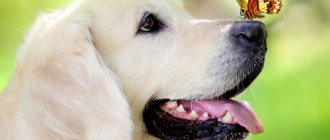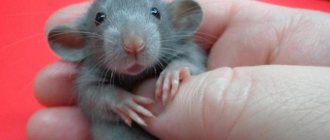Features of a street animal
A stray dog differs from a domestic dog in having more developed instincts, due to the habit of living in constant fear and distrust of people. Once in a new family, he will be extremely careful at first. If the behavior of the owner or other pets is not to their liking, then aggression may even occur. To establish contact, the owner must take into account the pet’s character.
Love and care will help you tame a street dog
A street animal has the following qualities:
- alertness;
- aggressiveness;
- timidity.
Most often, these qualities are expressed in dogs that have encountered human aggression. For example, a dingo dog does not tolerate the use of force.
In the enclosure, animals whose home used to be the street try to show their leadership. In addition, a stray dog more often suffers from the presence of parasites, for example, fleas, as well as digestive system disorders.
Important! Before you take your pet home, you must show it to a veterinarian.
The process of dog adaptation to a new owner can last about a month
Determining the level of socialization of an animal
The level of socialization is not given at birth, but is developed over the years under the influence of external factors. Attitudes towards humans and other animals, as well as behavior in different situations, directly depend on the living conditions before meeting the new owner.
From the street
A stray dog that has not known human affection and care is the most difficult case. She is used to not trusting others and taking them as a potential threat. A defensive reaction is often developed during physical violence from people or fights for food with their relatives.
From the shelter
Most of the shelter's inhabitants are stray dogs, puppies, or grown-up animals abandoned by their owners. In the latter case, pets often lose a roof over their heads, remaining completely alone in their dachas. Irresponsible owners abandon them when they return to the city, and subsequently get a new pet.
The level of socialization of such dogs is similar to street dogs, but sometimes a little higher. People are usually attracted to puppies that are the result of an unwanted pregnancy. If volunteers manage to find and save them, then the kind attitude of these people becomes the basis of the dog’s worldview.
From old owners
Representatives of this group are distinguished by the maximum level of socialization, but only those who managed to avoid violence. A well-mannered and good-natured dog may end up on the street as a result of the death of its former owner. Here you will have to work with depression caused by severe stress from separation.
How to attract an animal's attention and approach it
If you need to attract the attention of an animal, you should act carefully, following the safety rules:
- You need to beware of aggressive dogs. You should also avoid dogs that show symptoms of rabies.
- You should not look into the eyes of an unfamiliar dog. For them, direct gaze means a challenge, so it is better to look a little to the side.
- You can draw the animal's attention to yourself by snapping your fingers or clicking your tongue. You can try to call the animal, but in a calm tone, so as not to scare it or cause aggression.
- You should approach a dog whose attention has already been attracted slowly, avoiding sudden movements. You cannot squat in front of him, it is better to stay at a distance of 3-4 meters.
- Having approached the permitted distance, you should wait for the stray dog to come towards you. If he wags his tail welcomingly, then it is permissible to extend your hand in his direction, but you need to hold it with your palm down. It's best to have something tasty in your hand to help establish contact.
Taming a stray or shelter dog
If you adopted a pet from the street, you need to start by searching for the previous owners of the animal. Even if you want to keep the “foundling” with you, it would be a good idea to find out the dog’s health characteristics:
- age;
- vaccinations;
- heredity;
- chronic diseases;
- injuries;
- drug intolerance, etc.
A dog from the street should be shown to a veterinarian as soon as possible and, if necessary, treated. A stray dog will almost always require expensive comprehensive treatment and rehabilitation. Therefore, if you want to help a homeless animal, but cannot seriously spend money on it, adopt a shelter dog. She will be treated and vaccinated, and they will also be able to tell you in advance about the characteristics of her health and behavior.
Stray dog before and after treatment
A stray dog needs adaptation. Living in a family can be a completely new experience for her. The animal will not know the rules of behavior in the house; it will have to be taught to communicate with humans. Sometimes a stray dog will not allow itself to be walked on a leash or even petted at first.
A shelter dog may already have experience living in a family, but its behavior is also influenced by negative factors - the loss of its owner and familiar living conditions. She can also behave warily and sometimes aggressively.
Dogs at the shelter
Rules for meeting a stray or shelter dog:
- approach the dog slowly;
- don't get too close;
- no sudden movements or loud sounds;
- do not try to pet if the animal does not want it;
- offer small portions of aromatic wet food, not by hand;
- speak softly and quietly, act confidently;
- respect the dog’s personal space, let him get used to you;
- do not wear a collar and leash - the dog is more likely to go into your arms or into a carrier for a treat.
Table 2. How to establish trust with a street dog.
| Steps | Description |
| Step 1 | Don't hover over your dog, sit next to him |
| Step 2 | Don't corner your dog |
| Step 3 | Don't look your dog in the eyes - it provokes a conflict |
| Step 4 | Wait until the dog comes to you |
| Step 5 | Reach out your hand and let your dog get acquainted with your scent |
A stray or shelter dog has probably experienced many unpleasant moments in life. She has a hard time trusting people, so be patient. Be gentle, courteous and attentive, and the dog will appreciate your efforts. The animal will understand that you saved its life and will become very attached to you.
Aggression in stray or shelter dogs
If a dog snaps, bites or growls, it is afraid or dominant. Fear is common in homeless and shelter dogs who are not used to seeing kindness from humans. Such an animal needs to get used to you and develop a new reflex “the owner is good.” To do this, you must be confident, calm and friendly. You cannot be too persistent and immediately demand tactile contact. Treats and positive experiences from playing together will help establish friendship.
A dog with dominant behavior seeks to protect and control you. You must become an authority for her, then the pet will yield leadership to you and obey. To do this, do not be afraid to drive the dog away from its “home”; pull it back gently and calmly, but persistently. Don't let her get ahead and pull you along with her on walks. Do not allow your dog to snap and growl at guests, relatives, or other pets.
Don't let your dog growl or bark
How to train an adult dog to a new owner
It is much easier to tame an adult dog, inherited from previous owners who told about its habits and preferences. It is more difficult to domesticate a dog that is accustomed to the street, so in this case the question of how to attach a dog to yourself is the most difficult.
To tame an adult pet, you need to show him attention and sensitivity. It is necessary to let him know about your positive intentions, because, for example, a shepherd dog is wary of a new family.
Important! Taming a yard animal will take more time than one that previously lived in the family. A wild dog a priori does not trust people, since he has already felt all their anger.
You can tame it with treats. However, you should be careful with food, because mongrels are accustomed to living from hand to mouth and are gradually accustomed to normal food, avoiding overfeeding.
The owner must learn to inspire trust in the dog
Why you can't domesticate a wolf
Since 1907, the leading theory of domestication has been the simplest: once a man took orphaned wolf cubs, went out, and they became his faithful friends. Despite the romance of this story, it is very difficult to believe in it.
Let's start with the basics: yes, geneticists confidently breed a dog from a gray wolf (Canis lupus). Moreover, it is recognized as its subspecies (Canis lupus familiaris). However, representatives of the species Canis lupus are incredibly cautious and sensitive animals, literally hearing the leaves falling in the autumn air. It is very difficult to see the same wolf against his will: modern hunters use dogs or hunting birds to simply catch him. Of course, before the first domestication, our ancestors did not have such helpers. Finding even an adult wolf without them is a very dubious idea. To understand exactly how much, it is enough to remember that until the 21st century, people did not know about the presence of the gray wolf in Africa, and even its famous representatives, mistakenly classified as “Egyptian jackals,” were estimated as an endangered species numbering dozens of individuals. Only a genetic analysis of their excrement by 2011 established that these “jackals” are the same subspecies of gray as domestic dogs, and their number today exceeds one hundred thousand individuals. They began to look for the missing hordes of these animals - and literally in recent years they were discovered not only in Egypt, but also in a vast area from Senegal and Mali to Ethiopia. It is doubtful that the few primitive hunters were much more successful than modern scientists in detecting wolves, and especially wolf cubs.
Two wolf cubs play in the mountains of Switzerland
Photo: Denis Balibouse / Reuters
Let's leave the question of how the wolf cubs were found. There is an even more difficult question - how did ancient man manage to grow them in the first place? Many of us have seen modern wolves that were raised by people from puppyhood. It is widely known that they must be accustomed to humans from two weeks and in no case later than three, and only when isolated from adult relatives. After this, there is practically no hope that the wolf cub will perceive people as his own. However, until three weeks old, wolf cubs do not eat solids at all, requiring milk. It is unknown where the first cynologists who did not have dairy farming obtained milk.
And even if they had it, they would not be able to close the issue of raising young ones. Compared to other mammals, wolf milk contains a lot of arginine, without which Canis lupus cannot grow healthy. Modern wolf milk substitutes have very little arginine, which is compensated for by artificial additives, but where such additives could be bought many thousands of years ago is an open question, to put it mildly.
And the last reason to doubt: the grown-up wolf cub will remain loyal only to members of the human family where he grew up. The wolf, raised among people (and therefore not afraid of them), considers the rest of the representatives of our species as legitimate prey, especially when it comes to children and the sick. This is precisely how the unsuccessfully domesticated wolf cub from Gisinj in the 19th century killed a dozen children in three months, and this is why a number of modern wolf domestication centers have a sign “do not enter with a cold” on the doors. A wolf can attack even a person who is confident in his health - after all, many canines have such a good sense of smell that they can identify cancer by the smell of urine, about which the person himself may not yet be aware.
Wolf
Photo: Vasily Fedosenko / Reuters
How to win favor
To win the puppy's affection by bringing him into your home, you need to give him time to adapt to the new place. At first, the puppy may try to hide from the new owner, but soon the fear will subside. For good behavior, the puppy should be praised and pampered with treats, as well as give him affection and do not forget to play.
It is more difficult to get the affection of an adult pet, because it already has its own character and formed habits. It will take much longer to adapt, so you will need to be patient.
To gain trust, the owner needs to pet, talk and walk the dog often. If his behavior deviates from the generally accepted behavior, for example, he chews things, goes to the toilet at home, he must be scolded, but without using physical force.
Features of addiction
It is very important to help your pet bond with its new owner. It should be taken into account that the dog will try to escape from unfamiliar territory, so it is not recommended to leave it unattended. The pet needs to be made to understand that there is a place for it in the new home, and a space should be created where the puppy will feel safe.
A space equipped for it will help your dog get used to its new home.
The training process should be started gradually, because commands will be better followed when the owner begins to instill confidence in the pet. As for the diet, a sudden change in diet due to stress can lead to diarrhea. Therefore, new products should be introduced gradually, especially if the dog previously lived on the street.
Important! The process of getting used to it can last a week or even a month, so it is important to be patient, because, for example, a husky has a hard time getting used to its new owners.
Are dogs a weapon of genocide or a draft force?
0
The assumptions of Russian scientists about domesticated dogs among Neanderthals seriously diverge from the concept of the popular book “Invaders” by American anthropologist Pat Shipman, published in 2015. According to Shipman, it was the domestication of the dog, which drove mammoths to human hunters and then guarded the obtained meat, that allowed man to displace the Neanderthals, occupying the top of the food pyramid. In her opinion, the key factor that made human-dog interaction possible could be the whites of our eyes. Let us remind you: in humans, the main part of the surface of the eye is white, which is atypical for mammals. According to the researcher, this mutation appeared 40 thousand years ago. Thanks to this, Shipman believes, dogs can understand where people's eyes are directed during a hunt, which was difficult with Neanderthals, who supposedly did not have light whites of the eyes. True, the researcher herself notes that her hypothesis is still awaiting genetic evidence.
0
Shipman's concept raises serious questions not only because the age of the Altai dogs could well belong to Neanderthals. Australians, Bushmen and a number of other human groups never had domestic dogs. Even when dingoes were brought to Australia by sea several thousand years ago, the aborigines did not rush to use a ready-made domestic animal - on the contrary, like the Papuans with the singing New Guinea dog, they treated dingoes as wild and gradually pushed them into sparsely populated areas. At the same time, Australians settled their continent no later than 40 thousand years ago and since then have practically not interbred with the rest of the human race. And yet, the Europeans who came to Australia portrayed the natives with normal eye whites - exactly the same as today. All this makes the assumption of a connection between mutations in eye proteins and the domestication of canines somewhat ambiguous. As is often the case with articles based on Russian finds and research, the work of Ovodov, Kuzmin and Druzhkova itself, proving the ancient domestication of dogs, could not decisively influence discussions on this topic in the West. The point here is the traditional weak familiarity of Western specialists with the achievements of Russian science. Often something like a vicious circle is formed - our articles are not often published in leading Western journals, because they believe that this or that branch of science is poorly developed in our country, but they think so because there are no publications on the relevant topic in leading Western journals. And even if a couple of publications of this kind do appear, few people refer to them, which is why they rarely find themselves in the center of attention of the scientific community. So outside of Russia, the debate about the timing of dog domestication is still in full swing, and it can continue for a long time.
Meanwhile, a joint group of supporters of Savolainen and Wayne are working within the same research program, where they hope to resolve the contradictions that have arisen between them. To find out for sure whether the first domestication took place in the Paleolithic or Neolithic, scientists compare the bones of fossil dog finds around the world. The combined group has not yet reached a definitive conclusion on the date of domestication, but is generally inclined towards a pre-Neolithic scenario. However, their work has already brought the first unexpected result: in the back of the jaws of some ancient finds there is a lack of a pair of molars, for which there is space. This may mean that something like a bridle for sled dogs was used. If this is so, then the primitive domesticators were unusually advanced - the first primitive bridles on draft animals are usually attributed to the Neolithic, that is, 15-20 thousand years after the appearance of the first dogs.
Adaptation of a puppy in a new home
For a quick adaptation process, the dog needs to be introduced to the new place where he will live, no matter whether it is a booth, an apartment or a plot. He needs to be allowed to sniff everything and even taste it. It is imperative to show the puppy where the tray and place for eating and resting will be. In addition, you need to show him affection, and then the question of how to tame a puppy will not cause any particular difficulties.
How to accustom an adult dog to a new name
It is necessary to explain to all household members that an adult dog that has become a member of the family must be addressed by its new name. Each time you address your pet, you should say its new name. If he reacts to it, then reward it with a treat.
How to train your nails to be trimmed
You should not start cutting nails right away, because your four-legged pet may get scared. One day you need to sit him down and examine his nails. As a reward, if the pet does not leave, you can give a treat.
To avoid stress, you need to train your pet to cut his nails consistently.
The next day, sit the dog in front of you and slowly touch each nail with scissors. If the dog is not scared, then you can start cutting, but carefully so as not to damage the pulp.
Washing in the bathroom
The owner needs to call the pet to the bathroom, then after completing the command, treat it with a tasty product. The next day, you should call him into the bathroom and hold him in it for a couple of minutes, but without drawing water. When the dog gets used to the procedure, you can fill it with water and gradually accustom it to bathing. But you should draw a bath carefully, because, for example, the dachshund does not like a lot of water.
Over time, the washing procedure will delight the dog.
Teeth cleaning
It is necessary to call the pet, sit it next to it, raise its upper lip, and examine the oral cavity. If the dog behaved calmly and did not attempt to run away, reward it with a treat.
After some time, the inspection time should be increased. When the dog gets used to the procedure, use a soft brush to brush its teeth. At first it must be done quickly, then you can increase the time. To make the procedure enjoyable for your pet, use a special toothpaste with a pleasant aroma and taste.
Brushing your teeth is the basis for caring for your four-legged friend.
How to train a puppy to sit
There should be a diaper in the place provided for the pet. Every time the puppy goes to rest, he must be taken to the lounger and then the command “Place” must be said, while the owner’s hand must point to the lounger.
If the puppy tries to escape, it is necessary to hold it on the mat, constantly saying the command out loud. After he calms down, you need to give him a treat and pet him.
How to teach a dog a command near
The dog should be taught to carry out this command only after he gets used to walking on a leash. You need to take the dog on a leash and collar and start moving forward with it. Then give the command “Near” and walk your pet a few steps. If he follows the command correctly, he needs to be rewarded. If he doesn’t listen, then you need to repeat the exercise again and again.
How to accustom a puppy to clothes and shoes
To make it easy to get used to, the process needs to be turned into a game. When dressing your pet, he should be distracted with games, and if he is anxious, then calmed down with affection. At first, the animal will be capricious, because the puppy will experience discomfort due to being unaccustomed to wearing clothes. To make it easier to get used to, you can pamper him with treats.
How to accustom a puppy to a daily routine
Having brought a new animal into the house, the owner needs to observe its daily routine, remembering at what time it sleeps, eats and wants to relieve itself. Based on the data obtained, the daily routine should be formed.
The puppy should be fed at the same time and taken for a walk 10-15 minutes after eating. The new regime will help him adapt faster.
Important! If the puppy lives in a kennel near the house, then he needs to be taught to feed by the hour. If his home was previously a shelter, you should ask the breeders about his preferences.
The need for leash training
According to the law, an adult and large dog must be walked only on a leash. Of course, the dog must be accustomed to it and, for this purpose, put on a leash several times a day. When the animal stops paying attention to the leash, they pick it up and begin short walks. During the walk, your four-legged friend will be rewarded with food for good behavior.
It is illegal to take your dog out without a leash.
How to teach a dog to give paw
The owner needs to take a comfortable position and sit him opposite his four-legged friend. Next, extend your fist in front of him with the food squeezed inside, so that the dog can smell it. The dog will certainly try to get the food with his tongue, but as soon as the attempt is unsuccessful, he will instinctively hit the hand with his paw. The owner needs to hold the paw with his free hand and say the command “Give me the paw”, after which he gives the food held in the other hand.
The puppy's adaptation process, how to help with adaptation
How to train a puppy - a few simple tips:
- Let the baby get comfortable, examine and sniff all the rooms in the house and its inhabitants. You should immediately limit the available area - the dog must clearly understand where its area is.
- You need to play with the puppy, as out of boredom he can start chewing furniture. However, he shouldn’t get too tired. It is important to maintain a balance of activity and rest.
- From an early age, when the puppy is only a couple of months old, you need to start training him. It is very important to reinforce the animal’s correct behavior at the initial stages: determine its place, feeding schedule and play time, and begin toilet training. Training of children should take place in the form of multiple repetitions.
- During the first week, you should not allow other pets near the puppy if they reacted aggressively to the new family member. It is not recommended to completely limit their contact, only physical: you can put a partition so that the animals cannot attack, but have the opportunity to walk nearby, see and hear each other.
Note! Puppies are like children; cruelty and rough treatment are unacceptable towards them; they cannot be punished. All training and taming should be done in a patient, gentle manner.
Animals need to be trained from an early age
Adaptation of a wild dog: initiative and contact with humans
Tatyana Romanova, instructor, specialist in domestic and trick training, behavior correction, freestyle trainer
“We must be patient,” answered the Fox. - First, sit over there, at a distance, on the grass - like this. I will look sideways at you, and you remain silent. […] But every day sit a little closer...
Antoine de Saint-Exupery "The Little Prince"
How can you develop contact with a wild dog? At the very beginning of the journey, we will follow the advice of the wise Fox: sit at a distance, look sideways, and sit closer every day.
How to develop contact with a wild dog and teach it initiative?
We must give the wild dog time to take a closer look at us, to sniff us. There is no need to rush in this matter. I highly recommend starting work on adapting a wild dog from a distance: we go into the room and check at what distance the dog is not yet so frightened by our presence that it begins to growl or press itself against the wall. It is at this distance that we sit on the floor (or you can even lie down - the lower we are to the ground, the less danger we pose for the dog).
We sit sideways, don’t make eye contact, demonstrate signals of reconciliation (you can learn more about signals of reconciliation from the book “Signals of Reconciliation” by Tyurid Ryugas, which I recommend reading to every volunteer, curator or dog owner).
The presence session lasts at least 20 minutes, during which we can read aloud in a chant manner so that the dog gets used to our voice and its modulations. We can eat sandwiches, tossing small pieces to the dog from time to time. At first, she will not eat them in your presence, but her appetite comes with eating.
And gradually, every day, we approach the dog a step or two along a conciliatory arc. Our goal: to start sitting in close proximity to the house on the side of it, along its long part.
When the dog lets us close enough (usually this takes from a day to five if we are working in parallel on the number of walls of the house, on predictability and variety, that is, we are doing complex work), we begin to sit, read aloud and eating sandwiches in close proximity to the dog. We begin to touch her side (and there we are not far from the TTouch massage).
Of the classic and simplest search toys, I recommend leaving 1 - 2 shoe boxes half filled with crumpled pieces of toilet paper, into which we throw a few pieces of food before leaving. Let your dog explore the box and start digging through it for treats. Gradually we can make the task more difficult by covering the boxes with lids, constructing structures of several lids that will fall and make noise when the dog tries to get the food. This is what we need, we strive to explain to the dog that initiative and stubbornness lead to a reward: brawl, be impudent!
You can make the task even more difficult by running fabric ribbons in the shape of a lattice along the top of the box - stick your snout inside, fight the slight tension of the ribbons, and get food.
You can take a tennis ball, drill a hole in it, rinse the inside and put food in it. On the one hand, we teach the dog to insist on his actions - by rolling the ball, the dog receives a reward in the form of food spilling out. On the other hand, the dog gets acquainted with toys in this way.
I'm not a big fan of using commercial treat-dispensing toys like Kong in my practice with wild dogs, as they are usually made of a material that the wild dog doesn't understand or like very much. These are domestic dogs that will play with anything they find, will chew hard rubber or try to chase a hard plastic toy. And I actively recommend buying Kongs to owners of pet dogs who tend to chew inappropriate objects in the house or howl when alone. But a wild dog, in my opinion, needs something softer, something that does not inhibit the manifestation of initiative by unpleasant tactile sensations. That's why - soft toilet paper or toilet paper rolls placed vertically in a shoebox, or well-ventilated wine bottle caps. That is why a velor tennis ball is quite soft for a dog’s jaws. Or a rug made of fleece strips, inside of which a piece of food is placed.
When did a person make his first friends?
Let's say wolves domesticated themselves, but when exactly did they decide to do this? A group of geneticists led by Peter Savolainen, having examined the DNA of modern dogs, confidently breeds them from southern Chinese wolves that lived no later than 16,400 years ago. This region still has the widest genetic diversity in dogs. According to this scheme, dingoes are considered the oldest domestic dogs, followed by African Basenjis and Arctic husky dogs.
Supporters of this version, citing dating, see domestication as one of the stages in the transition from hunting to agriculture and consider the first domestic dogs to be a meat breed of livestock. True, feeding a domesticated wolf, unlike a dog, requires 1-2.5 kilograms of fresh meat per day - that is, even a one-year-old wolf gives less meat than it takes to feed it.
At the same time, a group of archaeologists and geneticists led by Robert Wayne consider the wolf to be “European.” Animal skulls from the Robber Cave in Altai are confidently dated to the 31st millennium BC, and finds in Goya (Belgium) to the 34th. The search for kinship not by nuclear, but by mitochondrial DNA, transmitted through the maternal line, led Wayne's group to the conclusion that the genes of modern dogs contain traces of similar creatures that lived more than 30 thousand years ago, whose closest wild relatives are European wolves.
Skull of a Paleolithic “dog” from Goye Cave (Belgium)
Credit: Image courtesy of Royal Belgian Institute of Natural Sciences
Another purpose of the dog naturally follows from the earlier dating: domesticated by Paleolithic hunters, it was hardly considered by them as a supply of meat. Rather, ancient people were interested in the extraordinary sense of smell of former wolves or the guarding and transportation by dogs of many tons of harvested mammoth meat, without draft animals, unsustainable for small human groups.
Of course, supporters of the point of view of the late (Neolithic) domestication of dogs look for shortcomings in the conclusions of ideological opponents. And they find it - a February publication by Abby Drake's group claims that the find from the Belgian Goye Cave is closer in skull structure to a wolf than to a dog. On the basis of which it is argued that domestication occurred only in the Neolithic - at the same time as the domestication of other domestic animals.
Unfortunately, Drake's work ignores a study by Russian scientists published in 2011 that clearly points to the existence of a canine skull that is 33-34 thousand years old. Moreover, as the lead author of that work, Yaroslav Kuzmin, noted, the skull from the Altai Robber Cave is extremely similar to the remains of a dog from Greenland that lived only a thousand years ago. This means that already 33 thousand years ago, the domestication of canines had advanced extremely far - almost to the modern level!
The question of the time of domestication was finally clarified after the publication of a work in 2013, the first author of which was listed as geneticist Anna Druzhkova from the Institute of Molecular and Cellular Biology of the Siberian Branch of the Russian Academy of Sciences. Analysis of 413 nucleotides of the Paleolithic Altai dog showed that it is significantly closer to dogs and prehistoric canines of the New World than to modern wolves. Accordingly, the animal from the Robber Cave, 33 thousand years old, is the oldest dog known today, which means that the domestication of our smaller brothers occurred long before the advent of agriculture. The same Yaroslav Kuzmin believes that it is not even clear yet who the owners of the first Altai dog were: “both Cro-Magnons and Neanderthals are suitable in age.” In other words, the first domestication, in principle, may turn out to be pre-human.
Human and dog skeletons discovered in the ruins of a 12,000-year-old house in Galilee. Photo: The Upper Galilee Museum of Prehistory
Here, dog lovers can breathe a sigh of relief: almost all researchers believe that the domestication of dogs in the Paleolithic could not have been aimed at slaughtering them for meat. Man at that time was so well supplied with big game meat that he now disdained delicious venison, feeding it to his pets.
What methods should be used to adapt a wild dog to life in a family?
I will dwell separately on methods of working with wild dogs. Although, to be honest, in my personal practice they do not differ from the methods of working with domestic dogs.
I sincerely believe that it is necessary to work with a wild dog only using soft methods, the method of operant training, in which the dog is an active participant in learning, explores the world and tries to guess what they want from it. We can give her hints by pointing (when we use our hand with a piece to direct the dog to the right action), since the wild dog is not yet ready for shaping, which perfectly teaches the dog self-confidence and initiative. But I am categorically against the use of aversive teaching methods. Global practice and statistics show the inadequacy of these methods of working, especially with wild dogs. And this is logical: if, when forcing you to study a foreign language, the teacher regularly yells at you and hits you on the hands with a ruler, will you want to continue learning a language that you didn’t need in the first place? In what class will you break down, express everything you think to the teacher, and leave, slamming the door?
Why choose a method in which the dog is an active participant? Remember, we have already mentioned more than once that initiative goes hand in hand with self-confidence, and both qualities help fight mistrust, caution and fear - those behavioral characteristics that most wild dogs display.
In addition to the toys we leave in the dog's room, I also recommend leaving a leash - let the dog have a chance to become familiar with it before we attach it to the harness.
Source
Laika
0
The domestic dog (Canis familiaris), a mammal from the wolf family (canidae; Canidae). Perhaps the oldest animal tamed and domesticated by man (“the first friend,” in the immortal expression of R. Kipling), his constant and devoted companion throughout human civilization. It has long been a matter of debate whether the diversity of modern breeds, from the huge Saint Bernards to the tiny Chihuahuas, comes from a single ancestor (the vast majority of researchers consider the wolf to be such), or whether it is the result of crossing wolves, jackals and even foxes. Most cynologists consider the dog's only ancestor to be the wolf (Charles Darwin's opinion), and all modern breeds are the result of artificial selection. But such a prominent scientist as Nobel Prize laureate Konrad Lorenz put forward a theory about the origin of dogs from wolves and jackals, emphasizing the diametrical differences between their characters and habits. There is also a third point of view that the ancestor of the domestic dog is some kind of independent (now extinct wild “proto-dog”, a relative of wolves and jackals. This, by the way, was also believed by Carl Linnaeus. This hypothesis is also confirmed by the fact that, easily crossing with wolves and jackals , the dog does not give stable mixed offspring, which already in the second generation splits into individuals with clear generic characteristics of dogs and wolves (jackals). There are also no known cases in which the offspring of completely feral dogs would become similar to wolves and jackals. Of course, the successes of genetic analysis , which has been developing by leaps and bounds in recent years, will soon bring final clarity to this issue.
×










